Images
Select an image to view a larger version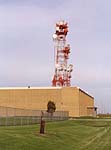

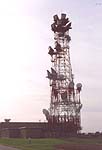
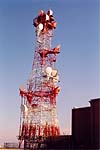
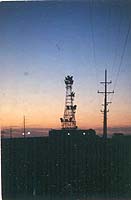
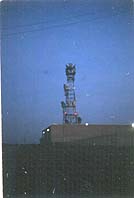
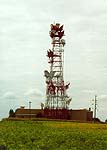
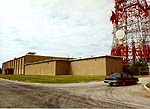

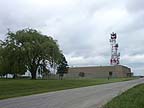
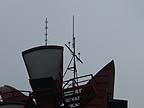
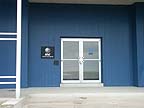
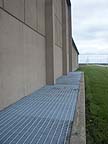
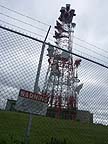
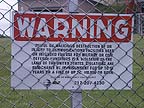
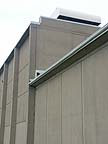

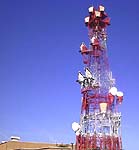
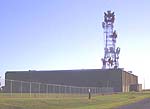
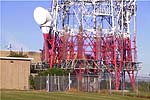
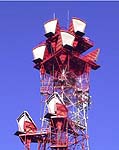
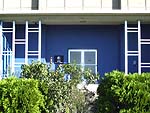
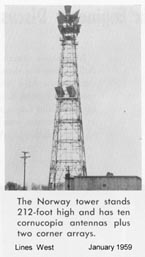
Common Language Location Identifiers (CLLIs): NRWYILNO, NRWYILFTAG, NRWYILFMAC
This station is an active AT&T network facility. AT&T Corporate Security has requested that the names and exact locations of such facilities not be published. Accordingly, it is identified on this web page only by its CLLI code, NRWYILNO.
NRWYILNO consists of a large building and a self-supporting steel-lattice antenna tower.
This AT&T site started out rather modestly as a simple repeater station in a new microwave route between Chicago, IL and St. Louis, MO. It eventually grew to become a major microwave and L carrier coax junction station and reportedly, the only eight sided AT&T microwave tower ever built.
The tower was originally constructed as a 200 foot tall, four sided type A tower. An additional four legs were later added between the existing four legs at the same radius from the tower center to create an eight sided tower, the additional legs go as high as the 100 foot point. Initially the tower supported four KS-5759 delay lens antennas, two were directed towards the Lemont, IL repeater station, the other two were directed towards the Lostant, IL repeater station. The delay lens antennas were eventually replaced with horn reflector antennas to allow additional message capacity.
The plans for the construction of this route were originally filed with the FCC on July 11, 1952, with a total construction cost of $4 million, and a planned completion date of mid 1953.
The entire 283 mile route consisting of nine intermediate relay stations was opened for service on September 14, 1953, initially providing two TD-2 channels in each direction for telephone and private line service. Additional TD-2 channels providing two television channels in each direction were installed in 1954. The [NRWYILNO] station (Chicago R2S) was an unattended repeater at this point in time.
The tower eventually held at least 23 microwave antennas for microwave routes radiating in 11 different directions from [NRWYILNO]. By then it was a fully manned facility with a large, two story building. The accompanying photos, taken in 2002, shows 21 microwave antennas on the tower, apparently the antennas for a former microwave link to Plano, IL were removed from the tower in the recent past.
NRWYILNO was one of ten Regional Centers, also known as Class 1 offices, in the Bell System's switching network hierarchy. These centers provided connections for long-distance calls which could not find routes through the more-numerous offices of lower rank in the network.
Like many other major Bell System facilities, NRWYILNO had a number of additional, important roles. It was a switching center for the Automatic Voice Network (AUTOVON), the Department of Defense's long-distance telephone system, and for the Federal Telecommunications System (FTS), which served the civilian agencies of the federal government. The station was also an "alarm center", receiving automated signals warning of malfunctions and unusual conditions at unattended Bell System facilities in the region. And NRWYILNO was a station on the "Echo-Fox" or "Nationwide" presidential radio network, which provided air-to-ground communications to Air Force One over the continental U.S. Its tower still holds the distinctive set of three antennas which supported that network.
A former AT&T engineer contributed this information about the testboard at NRWYILNO by which technicians tested the many trunk circuits linking the station to other Long Lines facilities:
"Another notable fact about [NRWYILNO] is that it had the 1st installation, in the 1960s, of a space & cost saving modification of the 17C testboard associated with the 4A switching system. The original 17C had 6 wire (xmit/rec/E&M sig leads) patch jacks for each of the 1000s of PSN circuits in a typical CO, requiring many bays of jacks, & all laborious frame wiring for them. The "[NRWYILNO] Board", as it was called throughout Long Lines offices, was directly connected to the carrier systems, eliminating the jacks & extra wiring."
Unknown.
 |
 |
 |
 |
 |
 |
||
 |
 |
 |
|
 |
 |
 |
 |
 |
 |
 |
|
 |
 |
 |
 |
 |
 |
 |
Updated on May 29, 2008 at 21:42 by Albert LaFrance